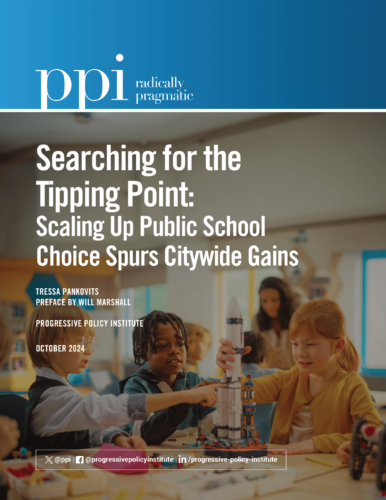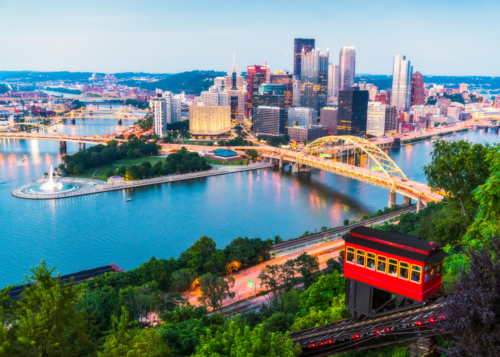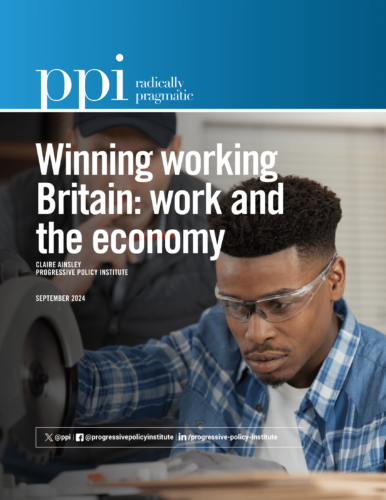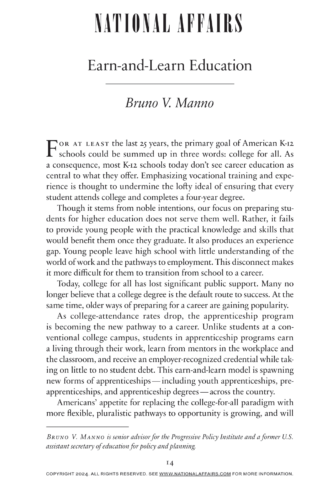Find the Preface by Will Marshall in the full report below.
INTRODUCTION
Charter schools are public schools, free and open to all. Like traditional public schools, charter schools are prohibited from charging tuition, must not discriminate in admissions or be religious in their operation or affiliation, and are overseen by a public entity.
Much has transpired since the first charter school law was approved in 1991 by the state of Minnesota. Today, 46 charter laws have created about 8,000 schools and campuses. Cumulatively, they enroll 3.7 million students (around 7.5% of all public school students), according to the National Alliance for Public Charter Schools’ (NAPCS) Data Dashboard. NAPCS also reports that charter schools employ around 251,000 teachers. Around six out of 10 (58.1%) schools are in urban areas, with the others in suburbs (24.9%), rural areas (11.4%), or smaller towns (5.6%).
While there are many nuances, the primary difference between public charter schools and traditional district schools is their governance model. In addition to oversight from a charter school authorizer accredited by state statute, public charter schools are governed by their own nonprofit boards. Board members are normally selected for their strong community connections and their commitment to advancing the particular mission of their school or network of schools.
In contrast to the traditional school district one-size-fits-all model, public charter schools are free to innovate to meet the needs of the children and parents who choose to attend them, whether it’s a unique curriculum, a unique school calendar, an emphasis on project-based learning, access to specific career pathways, or something else.
Decision-making in public charter schools, unlike traditional schools with central district offices, happens far closer to the students and the families who enroll them — in the vast majority of cases, by the teachers and school leaders who interact with students on a daily basis.
In states with strong charter school laws, charter schools are held to higher accountability standards than traditional district schools, which are rarely closed for poor performance.
The federal No Child Left Behind (NCLB) law — in force from 2002-2015 — was designed to scale up the federal role in holding schools accountable for student outcomes. NCLB is now frequently criticized for being too punitive, but even under its aggressive restructuring requirements, only 3% of very low-performing traditional public schools were taken over by state departments of education, and only 1% were reopened as charter schools.
Charter schools, on the other hand, commit to obtaining specific educational objectives in return for a charter to operate a school. A school’s charter is reviewed periodically by the entity that granted it and can be revoked if the conditions of the charter are not met. In New Orleans, for example, the Education Research Alliance at Tulane University (ERA) found that the replacement of underperforming schools with higher performing schools was the single most important factor in the system’s rapid improvement. ERA’s 2016 report, “The Effects of Performance-Based School Closure and Charter Takeover on Student Performance,” stated, “If policymakers can identify and intervene in the lowest performing schools (however they choose to define it), and ensure that students will end up in better schools afterward, then the evidence here suggests that school closure and takeover can have large positive effects and be a meaningful contributor to school improvement efforts.”
A new University of Colorado study released in September 2024 on the Denver reform “era” (20082019) found that most students who left closed Denver schools and attended new ones saw their test scores go up, with greater gains for English learners and students with disabilities. Student achievement also went up districtwide, which study authors attribute to years-long efforts to give school leaders more autonomy, hold them accountable for results, and make it easier for families to choose among a range of schools.
Decades of empirical research supports what ERA found in 2016 and what University of Colorado learned last month: When thoughtfully implemented with strong accountability measures, innovative, autonomous public schools move the needle for thousands of students, especially children from low-income households in urban areas.
Stanford University’s Center for Research on Education Outcomes (CREDO) has undertaken many local studies and, in 2023, released its third major national report in a series spread out over the past 30 years. In that massive study, CREDO researchers assessed the performance of students at 6,200 charter schools in 29 states between 2014 and 2019, confirming that charter-school students, on average, outperformed their peers in demographically-matched traditional public schools.
There have also been studies that find a “spillover effect.” In other words, when a system has a mix of different types of public schools, including public charter schools, student learning increases for everyone. The Thomas B. Fordham Institute, an education-policy think tank, in 2024 found that “…average test scores for all publicly enrolled students in a geographic region rise when the number of charter schools increases.”
Of course, test scores are not the sole means of measuring school quality. Another indicator is parent demand. Most parents, if given a choice and — importantly — are provided the information needed to make informed choices, will naturally do what is best for their children’s education. Every school year, hundreds of thousands of families nationwide demand increased access to high-quality public school choices like charter schools, as evidenced by data from waiting lists for oversubscribed charter school seats. For example: In North Carolina alone, more than 85,000 students were on waiting lists for the 2024-25 school year.
Minority parents nationally are the most enthusiastic charter school users. According to the NAPCS’ Data Dashboard,16 charter schools have consistently enrolled more students of color and students from low-income families than traditional district schools. Currently, seven out of 10 (70.7%) charter students are students of color compared to around half (53.8%) of district students, with six out of 10 charter students receiving free and reduced lunch compared to half (50.3%) in district schools. An opinion poll released in May 2024 by Democrats for Education Reform found that 77% of parents, including 80% of Black and 71% of Hispanic parents, had a favorable view of public charter schools.
The student performance data in this new report adds an important dimension to the growing body of research highlighting the superior performance benefits of growing well-designed portfolio systems that include a mix of both traditional and charter public schools.
Importantly, this analysis looks at correlation, not causation. There are many theories about the cause of this spillover effect. Our findings add credence to the long-stated supposition that public charter schools create a competitive dynamic that compels traditional district schools to upgrade their teaching and learning to maintain enrollment, so that conditions improve for all children. Another common explanation, as charter schools uncover better ways of motivating learning, other schools in that same geography then adopt those innovative practices. Or, an increase in school options to make it more common for parents to find a school that is the optimum fit for unlocking their child’s potential.
While more research on these theories is required, the existing evidence of positive spillover effects bolsters the case for making public school choice a key element of a national policy. We call on the nation’s elected leaders to embrace policies aimed at expanding high-quality autonomous schools so that more cities can strive for the gains we describe here.
The report concludes with recommendations for further research into why increased public school choice lifts school quality and how cities that currently have even a small share of public charter school students can strengthen their gapnarrowing capacity.
KEY FINDINGS
The major findings of this report are as follows:
1. Over the last decade, cities that have aggressively expanded high-quality public school choices available to students have seen a true rising tide: Low-income students across these cities — whether they attend a public charter or district-operated school — have started to catch up to statewide student performance levels.
2. This is particularly true when at least one-third of a city’s students are enrolled in a public charter school or charter-like school: Outcomes improve citywide over time.
3. In the 10 U.S. cities serving majority low-income students with at least one-third enrolled in charter schools, low-income students citywide have made meaningful progress toward achieving on par with students statewide.








